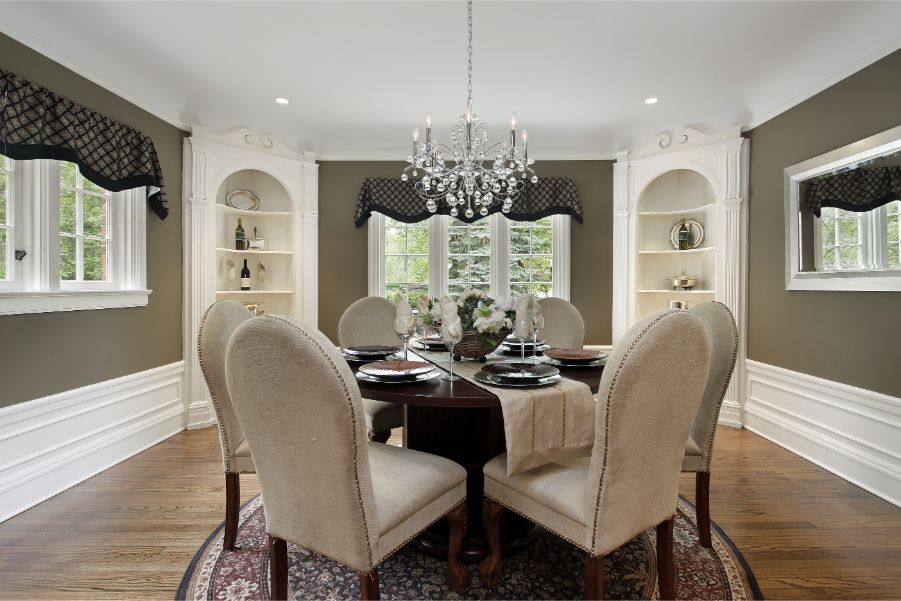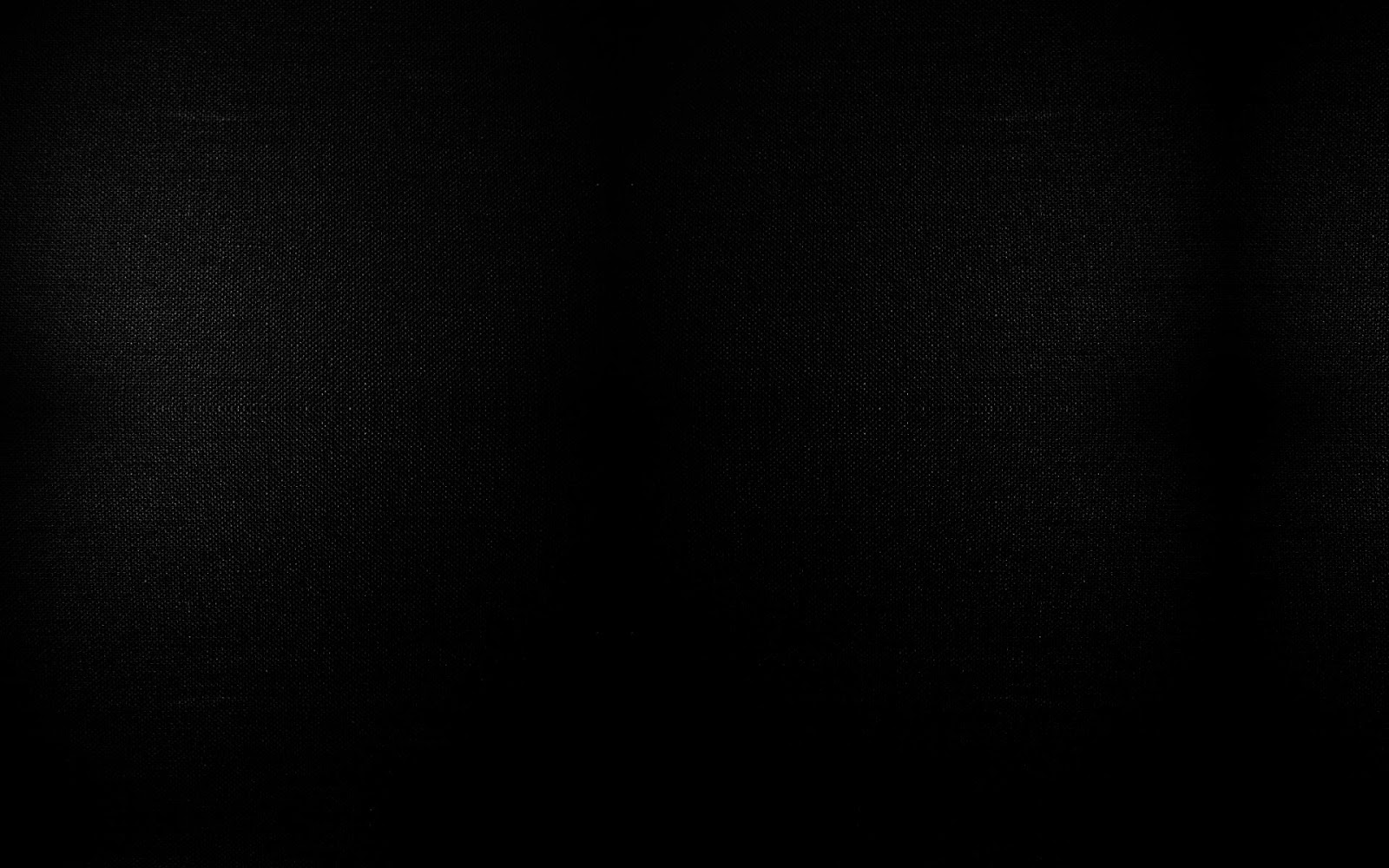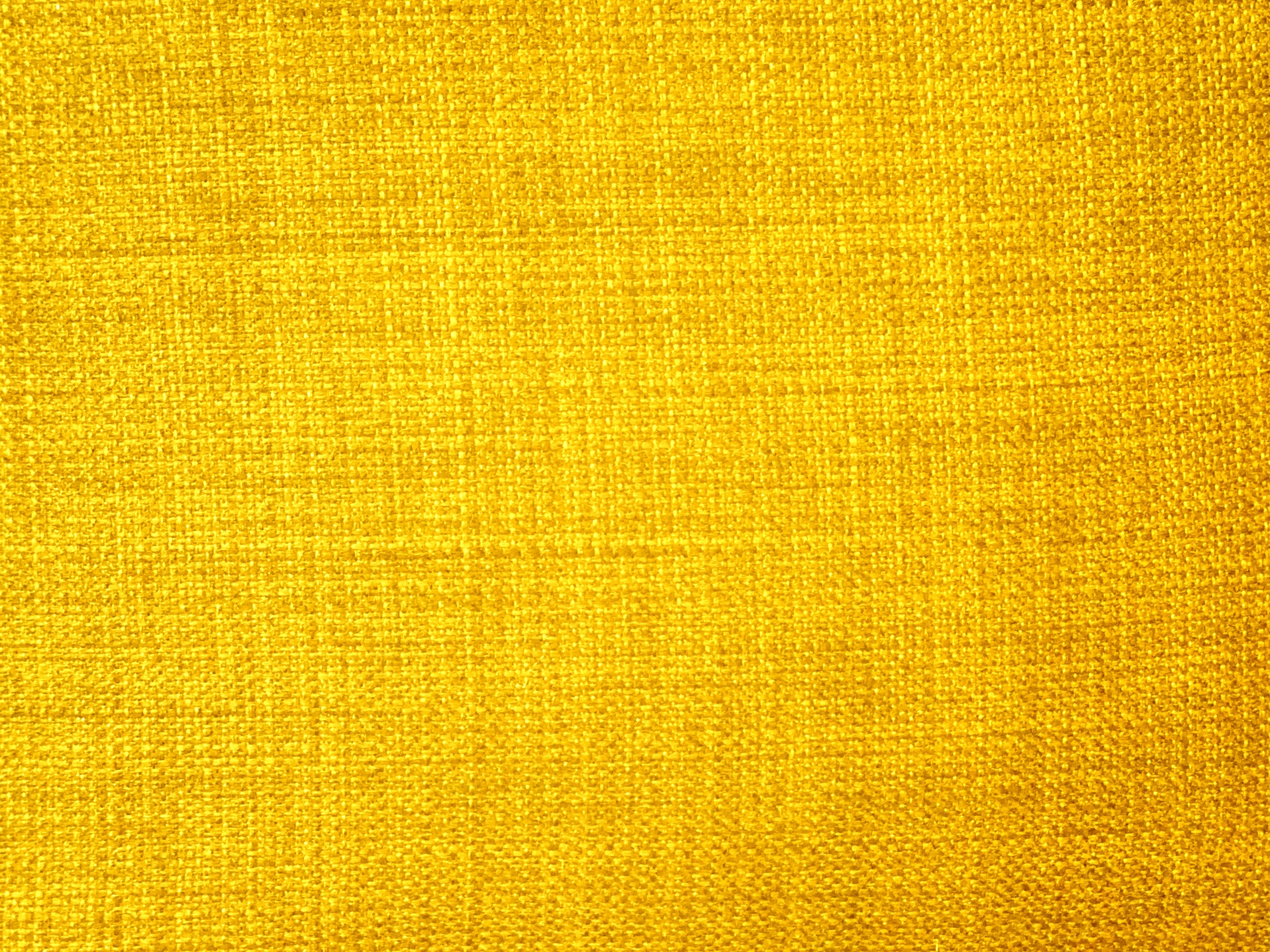Dark Colors
While dark colors can add a touch of sophistication and drama to a room, they are not the best choice for a dining room. The main reason is that dark colors tend to make a room feel smaller and more cramped. This is especially true for smaller dining rooms, as they can quickly become overwhelming and claustrophobic when painted in a dark color.
Additionally, dark colors can also make it difficult to see food and drinks, which can be a major inconvenience during meal times. It's important to have enough light in a dining room to not only create a welcoming atmosphere but also to be able to see what you're eating. Dark colors can also make it harder to clean up any spills or messes, as they tend to show stains and dirt more easily.
Overall, while dark colors may seem like an elegant and bold choice for a dining room, they can often do more harm than good. Stick with lighter, brighter colors to create a more inviting and spacious dining area.
Red
Red is a powerful and attention-grabbing color, but it's not the best choice for a dining room. The color red has been shown to increase appetite, which may seem like a good thing for a dining room. However, it can also lead to overeating and feeling overwhelmed during meals.
Red is also a very stimulating color, which can make it difficult to relax and enjoy your meal. This is especially true for individuals with high levels of stress or anxiety, as the color red can intensify these feelings.
Instead of painting your dining room walls red, opt for accents of the color through decor or table settings. This will add a pop of color without overwhelming the space and creating a more conducive environment for dining.
Black
While black may seem like a sleek and modern choice for a dining room, it can often make the space feel too dark and unwelcoming. Black walls can also make the room feel smaller and more closed off, which is not ideal for a dining space.
In addition, black can also absorb light, making the room feel dim and gloomy. This is not conducive to a pleasant dining experience and can even affect your mood negatively.
If you still want to incorporate black into your dining room, consider using it as an accent color rather than the main wall color. This will add a touch of sophistication without overpowering the space.
Brown
Brown may seem like a neutral and safe choice for a dining room, but it can often make the space feel dull and uninspiring. Brown walls can also make the room feel smaller and can clash with certain furniture and decor styles.
Instead of using brown as the main color in your dining room, opt for lighter neutral colors like beige or cream. These colors will still create a warm and inviting atmosphere without making the space feel too dark or cramped.
Gray
Gray has become a popular choice in home decor, but it's not the best color for a dining room. Gray walls can make the space feel cold and uninviting, which is not ideal for a room meant for gathering and enjoying meals.
In addition, gray can also be a difficult color to pair with other colors and can make it challenging to create a cohesive and visually appealing dining room. Instead, opt for warmer neutral colors like beige or light brown to create a more inviting and welcoming atmosphere.
Dark Green
Similar to dark blue, dark green can make a room feel more confined and smaller. This is not ideal for a dining room, which should feel open and spacious to accommodate gatherings and meals.
Dark green can also have a somber and serious feel, which may not be the best ambiance for a dining room. If you still want to incorporate green into your dining room, opt for lighter shades that will create a brighter and more cheerful atmosphere.
Dark Blue
Dark blue may seem like a calming and elegant color, but it can quickly make a dining room feel too dark and dreary. Dark blue walls can also make the room feel smaller and more enclosed, which can be overwhelming during meal times.
Instead, opt for lighter shades of blue or even blue accents through decor or table settings. This will still create a peaceful and serene ambiance without overpowering the space.
Purple
While purple may be a bold and unique choice for a dining room, it can often make the space feel too dark and dramatic. This is not ideal for a room meant for gathering and enjoying meals.
Purple can also be a tricky color to pair with other colors and can make it challenging to create a cohesive and visually appealing dining room. If you still want to incorporate purple into your dining room, opt for lighter shades or use it as an accent color rather than the main wall color.
Neon Colors
Neon colors may be trendy and eye-catching, but they are not suitable for a dining room. These bright and vibrant colors can quickly become overwhelming and distracting, making it difficult to relax and enjoy a meal.
In addition, neon colors can also be challenging to pair with other colors and can create a chaotic and unappealing dining room. Stick with more subdued colors for a more inviting and comfortable dining experience.
Yellow
While yellow is often associated with positivity and happiness, it's not the best choice for a dining room. Yellow walls can quickly become too overwhelming and intense, making it difficult to relax and enjoy your meal.
Yellow can also be a tricky color to pair with other colors and can create an unbalanced and visually jarring dining room. If you still want to incorporate yellow into your dining room, opt for softer shades or use it as an accent color rather than the main wall color.
Why Neutral Colors Are the Best Choice for a Dining Room
:max_bytes(150000):strip_icc()/DesignbyEmilyHendersonDesignPhotographerbyZekeRuelas_30-ad51133a857343228a2c56f76a22825f.jpg)
Creating a Calming Atmosphere
 When it comes to choosing a color for your dining room, it's important to consider the atmosphere you want to create. A dining room is a place where people gather to eat and socialize, so it's essential to choose a color that promotes relaxation and harmony. Neutral colors, such as beige, gray, and white, are perfect for creating a calm and inviting atmosphere in a dining room. These colors are soothing to the eye and can help reduce stress levels, making them an ideal choice for a space where people come to unwind and enjoy a meal.
When it comes to choosing a color for your dining room, it's important to consider the atmosphere you want to create. A dining room is a place where people gather to eat and socialize, so it's essential to choose a color that promotes relaxation and harmony. Neutral colors, such as beige, gray, and white, are perfect for creating a calm and inviting atmosphere in a dining room. These colors are soothing to the eye and can help reduce stress levels, making them an ideal choice for a space where people come to unwind and enjoy a meal.
Enhancing Natural Lighting
 Another reason why neutral colors are ideal for a dining room is that they enhance natural lighting. The soft tones of neutral colors reflect light, creating a brighter and more spacious-looking room. This is especially beneficial for smaller dining rooms that may lack natural lighting. By painting the walls in neutral colors, you can make the most of the natural light in the room, creating a warm and inviting ambiance for your guests.
Another reason why neutral colors are ideal for a dining room is that they enhance natural lighting. The soft tones of neutral colors reflect light, creating a brighter and more spacious-looking room. This is especially beneficial for smaller dining rooms that may lack natural lighting. By painting the walls in neutral colors, you can make the most of the natural light in the room, creating a warm and inviting ambiance for your guests.
Easy to Match with Furniture and Decor
 One of the biggest advantages of choosing neutral colors for a dining room is their versatility. Neutral colors can easily match with any furniture or decor, making it easier to change the look and feel of the room without having to repaint. This is particularly useful if you like to switch up your dining room's style frequently or if you plan on selling your house in the future. Neutral colors act as a blank canvas, allowing you to add pops of color through furniture, artwork, or accessories, creating a unique and personalized dining room.
One of the biggest advantages of choosing neutral colors for a dining room is their versatility. Neutral colors can easily match with any furniture or decor, making it easier to change the look and feel of the room without having to repaint. This is particularly useful if you like to switch up your dining room's style frequently or if you plan on selling your house in the future. Neutral colors act as a blank canvas, allowing you to add pops of color through furniture, artwork, or accessories, creating a unique and personalized dining room.
Classic and Timeless Look
 Neutral colors are timeless and never go out of style. Unlike bold or trendy colors, they won't become outdated or clash with your furniture and decor. This makes them a practical and long-term choice for a dining room. Not only will your dining room look elegant and sophisticated, but it will also stand the test of time, ensuring that you won't have to repaint anytime soon.
In conclusion
, when it comes to choosing a color for your dining room, neutral colors are the best choice for creating a calming and inviting atmosphere, enhancing natural lighting, and offering versatility and timeless style. So, before reaching for that bright red or dark blue paint, consider the benefits of opting for a neutral color palette for your dining room. Your guests will thank you for it, and you'll have a beautifully designed space that will stand the test of time.
Neutral colors are timeless and never go out of style. Unlike bold or trendy colors, they won't become outdated or clash with your furniture and decor. This makes them a practical and long-term choice for a dining room. Not only will your dining room look elegant and sophisticated, but it will also stand the test of time, ensuring that you won't have to repaint anytime soon.
In conclusion
, when it comes to choosing a color for your dining room, neutral colors are the best choice for creating a calming and inviting atmosphere, enhancing natural lighting, and offering versatility and timeless style. So, before reaching for that bright red or dark blue paint, consider the benefits of opting for a neutral color palette for your dining room. Your guests will thank you for it, and you'll have a beautifully designed space that will stand the test of time.


















































































































